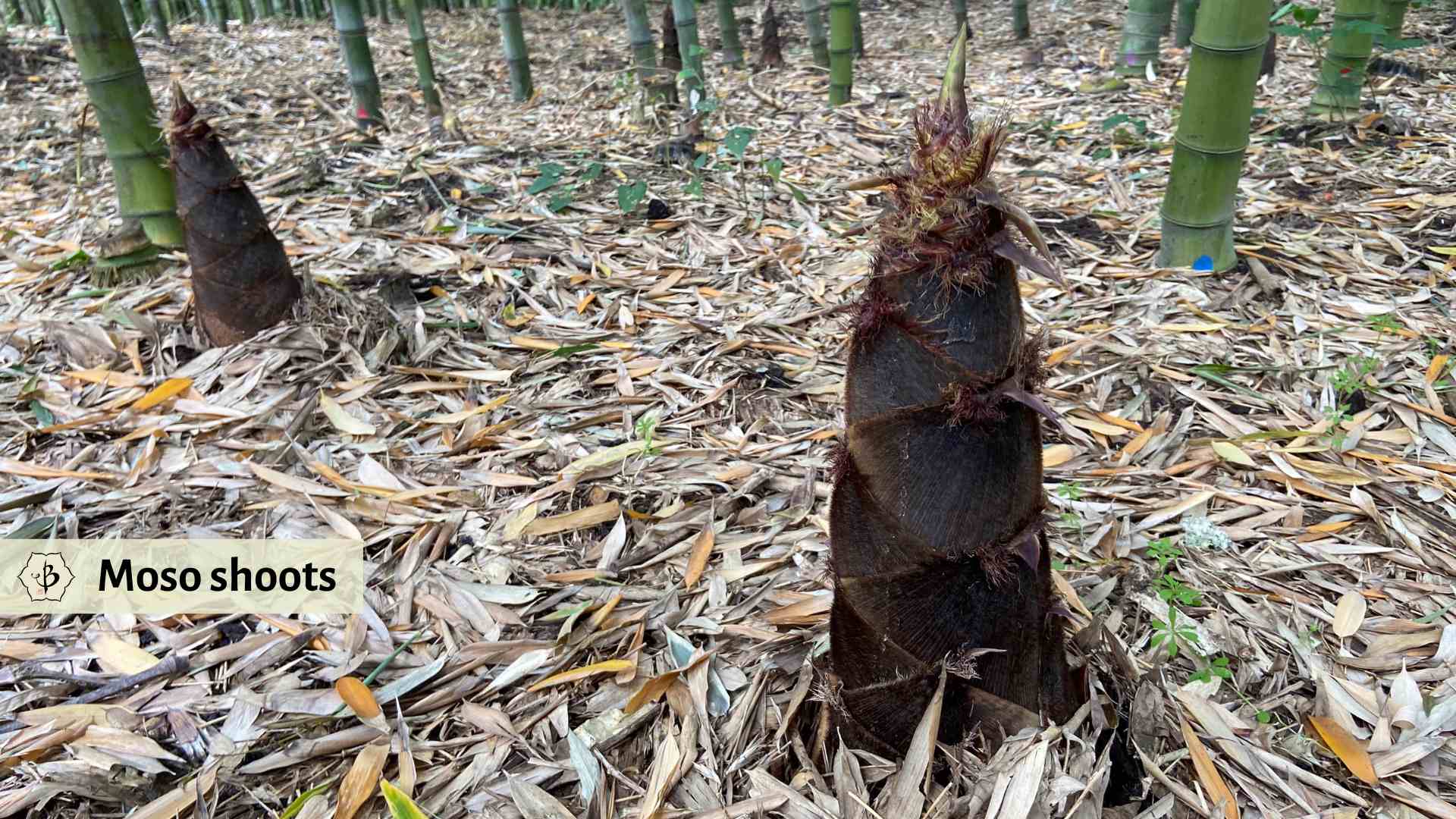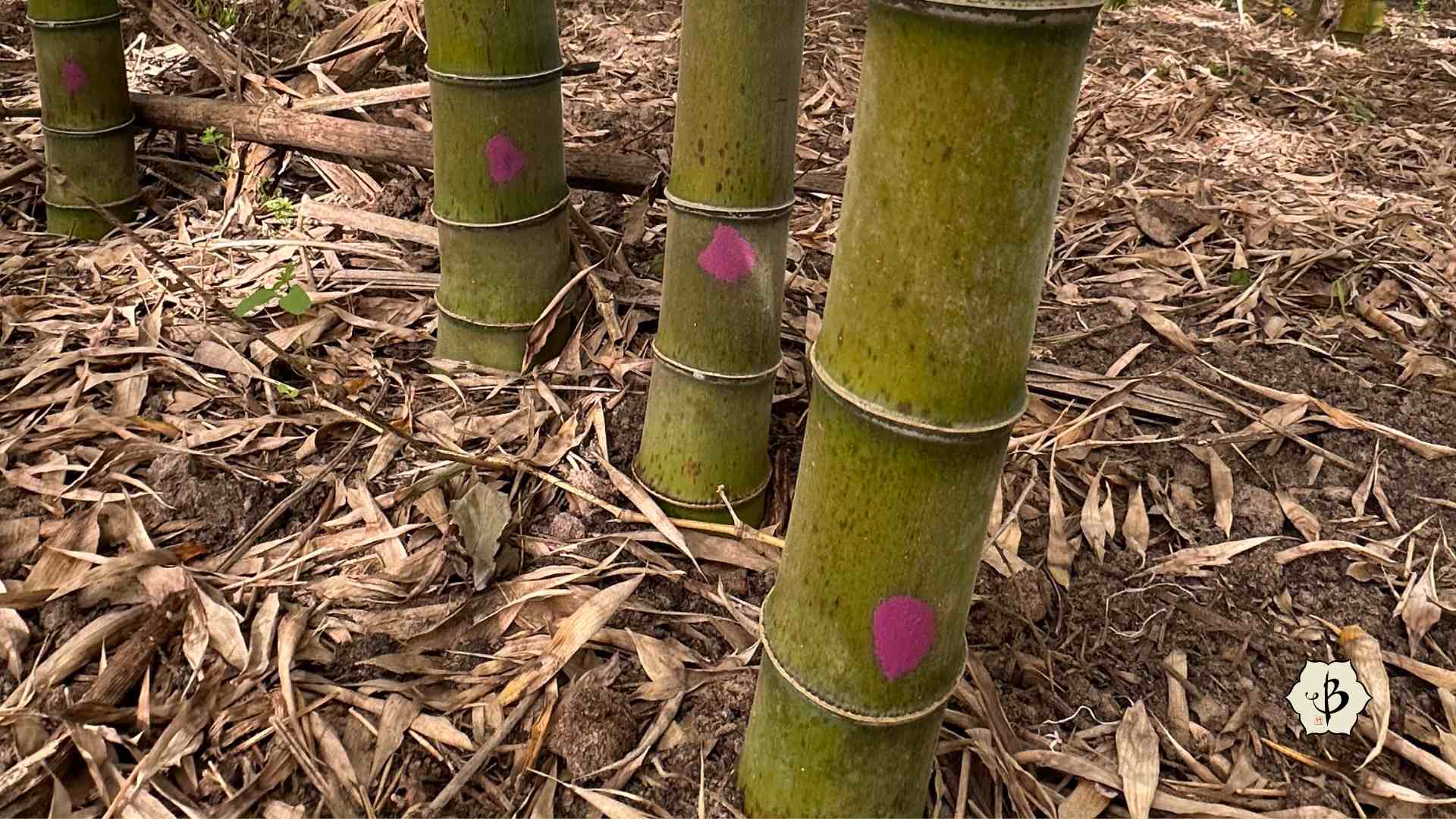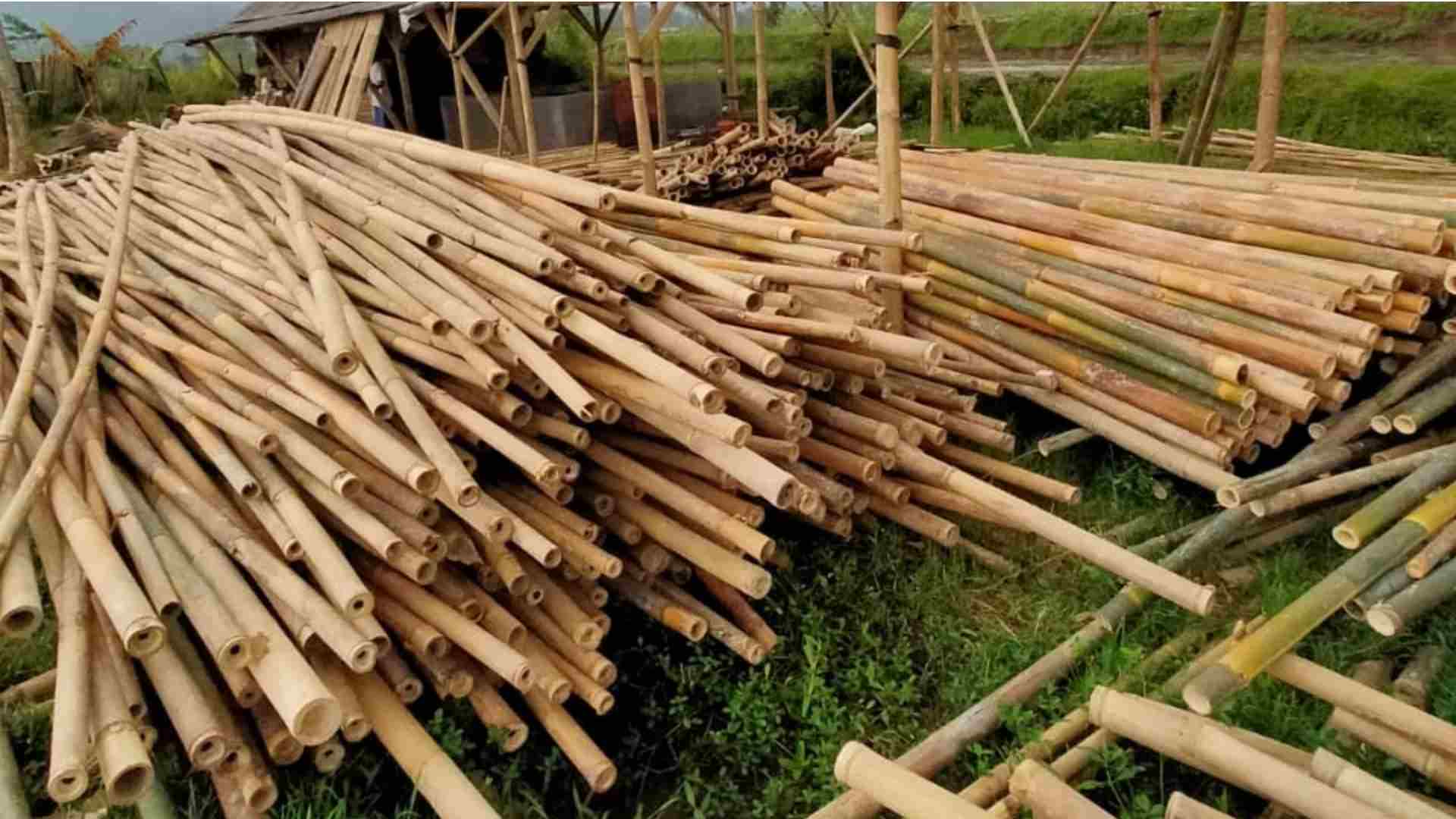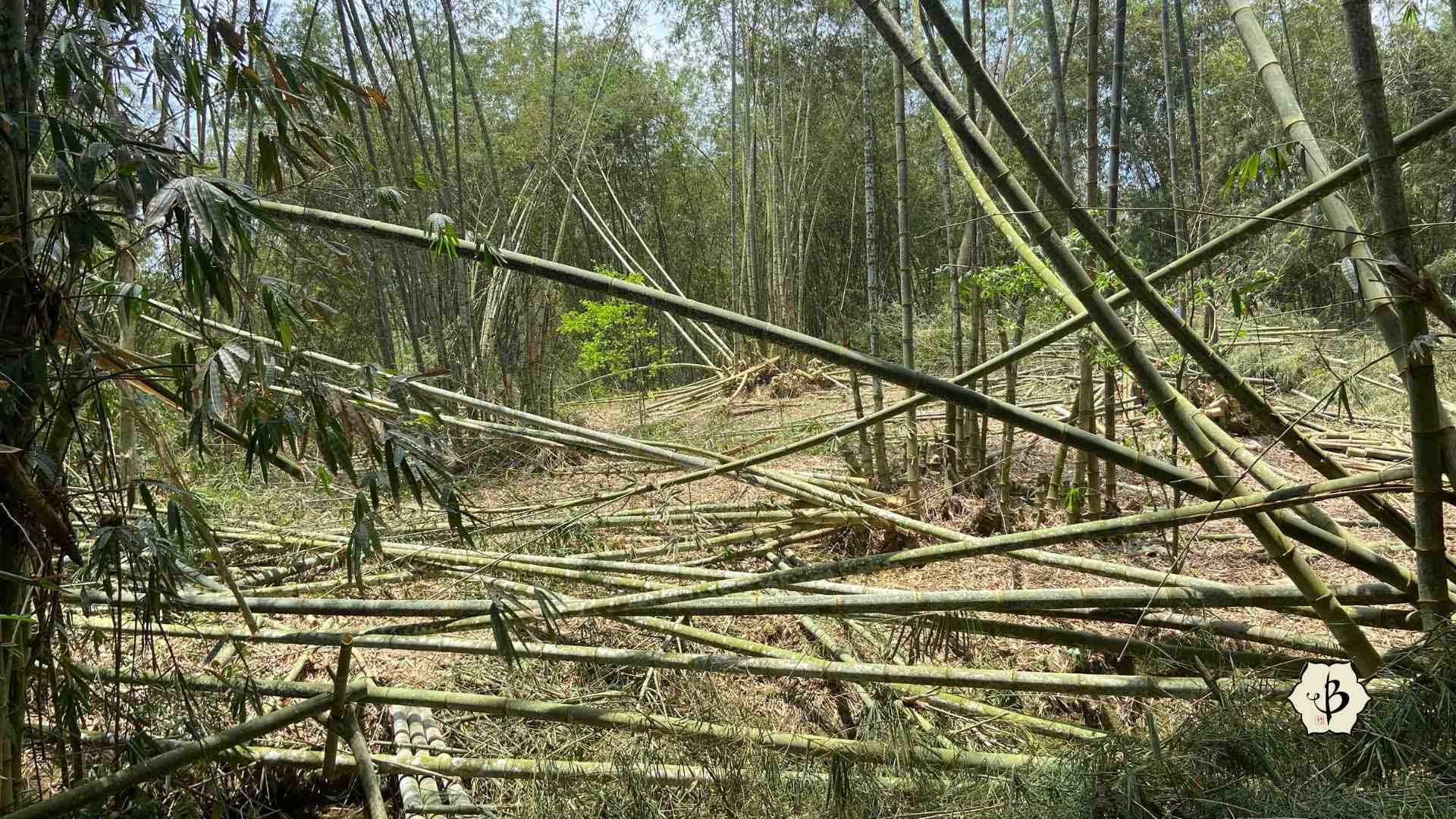Growing bamboo can be fun and fascinating. One day in spring, the new shoots will reveal themselves, and within weeks, they become towering, majestic poles. Soon, these young culms will produce a profusion of leaves. And suddenly, you have a flourishing grove of resplendent bamboo. It’s a beautiful addition to the garden, but if you’re making use of the bamboo, you need to know about harvesting it.
Harvesting bamboo at the right time will ensure that your plants stay healthy and that you reap the highest quality material for any use. Specific harvesting strategies will depend on what end-use you have in mind for the bamboo. It takes about five or six years before a bamboo plant will produce full-sized culms. Then it’s best to leave them to mature for another two or three years, allowing the wood to harden. For the optimal health of the grove, you should harvest no more than about 20% of the culms each year.
NOTE: This article first appeared in August 2022, most recently updated in May 2024.
Why harvest bamboo?
Bamboo is famous for having hundreds, if not thousands, of uses. Farmers might grow it for building material, to build rustic structures, or to make it into high-end, engineered lumber. Or they could be growing it for biomass, which they can burn for energy or pulp into paper. Other possible products include toothpicks, chopsticks, toothbrushes and biochar. The list goes on and on.
In residential settings, people tend to grow bamboo as an ornamental. But even so, the plants tend to grow quickly, and eventually, you’ll need to cut them back. At the same time, you might as well harvest strategically, because the best quality poles can be very useful.

Depending on what species you have, the bamboo canes will be more or less useful for different applications. Some timber bamboo varieties have big, thick poles that are ideal for building and construction. Others simply look pretty, but the culms are not particularly strong. Therefore, if you have the right species and the necessary skills, you might use your bamboo to build a gazebo or a backyard she-shack. Or, you might just use it decoratively to beautify a tiki bar, make some picture frames, or create any number of interesting crafts.
Harvesting bamboo isn’t just a matter of gathering raw materials and improving your interior design, it’s also very beneficial for the plant. Bamboo has a reputation for spreading vigorously, but if you thin it out from the middle of the grove, the new growth will tend to be for in-fill, rather than expansion.
Also, if you leave the canes in the ground for several years or more, they will start to age and decay. But if you harvest the older canes before that happens, you can keep your grove always looking fresh and vibrant.
When to harvest
When it comes to harvesting any plant, timing is always critical. But with bamboo, it’s not usually such a seasonal event. It has more to do with the age of the plant and the age of the culms. But it really depends on what part of the bamboo you’re harvesting.

Harvesting bamboo shoots
If you’re harvesting the fresh shoots for culinary purposes, then the time of year will be of the greatest importance. As a general rule, bamboo will produce a wave of fresh shoots every spring. And in some cases, in favorable climates, the plants can produce a second wave of new shoots again in the summer.
If you want to eat the shoots, or sell them to an exotic grocer, you need to harvest them at the right time. Harvest too early, and there won’t be enough “meat on the bone”. Harvest too late, and the shoots will have already turned a bit woody. So you want to find the sweet spot where the shoots are big enough, but not too big.
You may need to experiment to find the optimal size, as it will depend on the species and the growing conditions. But typically, they should be a few inches to a foot in length. They should probably be around one to two weeks old. If your bamboo grows a foot a day, then you’ll need to harvest it sooner.
As a rule, you can harvest about half of the bamboo shoots without negatively impacting the plant. If you over-harvest, there won’t be enough shoots left to grow up and refresh the bamboo grove.

Harvesting premium poles
If you’re harvesting the canes to use as poles for building or to make other products, then the time of year isn’t so crucial. But the best time tends to be in the summer or fall. Try to avoid harvesting poles when there are lots of young and tender shoots coming up. And it’s no fun trying to harvest in the rainy season, for obvious reasons.
What’s most important is the age of the bamboo. But keep in mind, there’s the age of the plant, and there’s the age of the culm. Two different things. When the plant is young, it will produce very small culms. As the plant gets older, if it has good growing conditions, it will mature and produce larger culms. After five to seven years, the plant should be fully established and producing full-sized culms.
The culms will reach their full height in a single year, so those small culms from the first few years will never get any larger. At some point, you should go in and thin them out to make the plant look better and to make room for newer, bigger culms.
As for the larger culms that come up after year six or seven, they will be the most impressive in size, both in height and diameter. But if you want the strongest wood for building, it’s best to leave those poles in the ground for about two or three more years. This waiting time is crucial for the culm walls to grow thicker and harder.
How to harvest bamboo
Harvesting bamboo is more like forestry management than farming. You generally don’t just go in and plow the field. (Not unless you’re farming bamboo for biomass or pulp. See below.) To ensure an ongoing, productive farm, you only want to harvest about 20 to 25% of the poles each year. And as we discussed earlier, it’s important to select the older culms that have been in the ground for a few years already.
The selection of bamboo poles requires some amount of expertise. It’s not easy to look at a pole and know whether it’s one year old or five years old. The newest poles still have some of the culm sheaths on them, that protective wrapper that slowly peels off as the new shoot develops. And the older poles will have more lateral branches, as those are produced in subsequent years. But it really helps to mark the culms somehow to identify them and know their age.

Check out our list of Bamboo Gardening Tools for tips on the best saws and pruning implements.
When harvesting, it’s important to cut the bamboo as close to the ground as possible. If you leave much of a stump, it may produce new branches the following year, and these are neither useful nor attractive. Cut the canes low to the ground for a cleaner look and an easier crop to manage.
You should also try to cut it as close above the node as you can. If you leave too much space above the node, then the hollow cavity with collect rainwater, which could lead to rotting in the base of the plant and even the roots. Stagnant water will also attract mosquitoes and other vermin. If you cut right at the node, it will leave a clean mark.
If you’re concerned about rotting and fungus, you can also apply a treatment to seal the scars. You can check your local hardware store or shop for pruning sealer on Amazon.
Harvesting bamboo pulp and biomass
If you’re growing bamboo for pulp or biomass, the harvesting strategy is a bit different. In this case, the age and quality of the poles are not so important. Rather than selecting individual culms, producers will usually use a tractor or other harvesting machine to cut down long rows.
For this approach, the bamboo should still be fully mature and well-established to be sure that it will grow back quickly and sizably. One method is to harvest half of each field each year. Or you can harvest everything every two years. Either way, the result is a two-year harvesting cycle. Also, you can easily adapt this to a three-year harvesting cycle by mowing down one-third of your acreage each year. This idea is to harvest in rows, so you harvest every other row or every third row each year, so as not to clear-cut in vast swaths.
The main advantage with this strategy is that you can use heavy machinery without the need to go in and hand-select the premium poles. This makes sense for very large-scale bamboo farms where a more efficient method of harvesting is required.
Furthermore, feedstock for pulp doesn’t need to be so mature, like the best quality poles for building. In fact, older poles have a higher lignin content, which actually makes them more difficult to process. So young and tender poles translate to a faster turnover rate and a less intensive pulping process.

Further reading
There’s a season to plant, a season to reap, and a season to read. When the time comes to read about bamboo, turn to Bambu Batu. We have hundreds of in-depth articles about the world’s most incredible grass.
FEATURE IMAGE: Harvest of Dendrocalamus asper in the Philippines. Photo by Fred Hornaday.




















